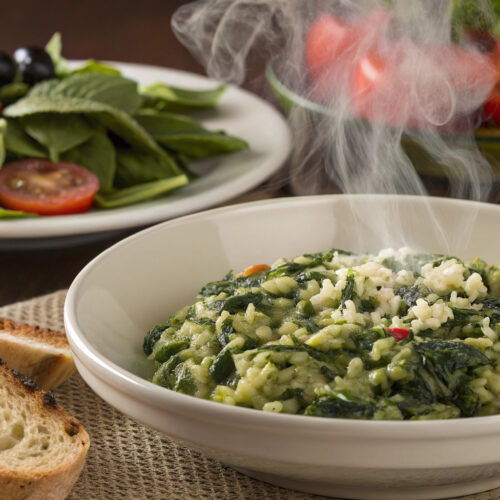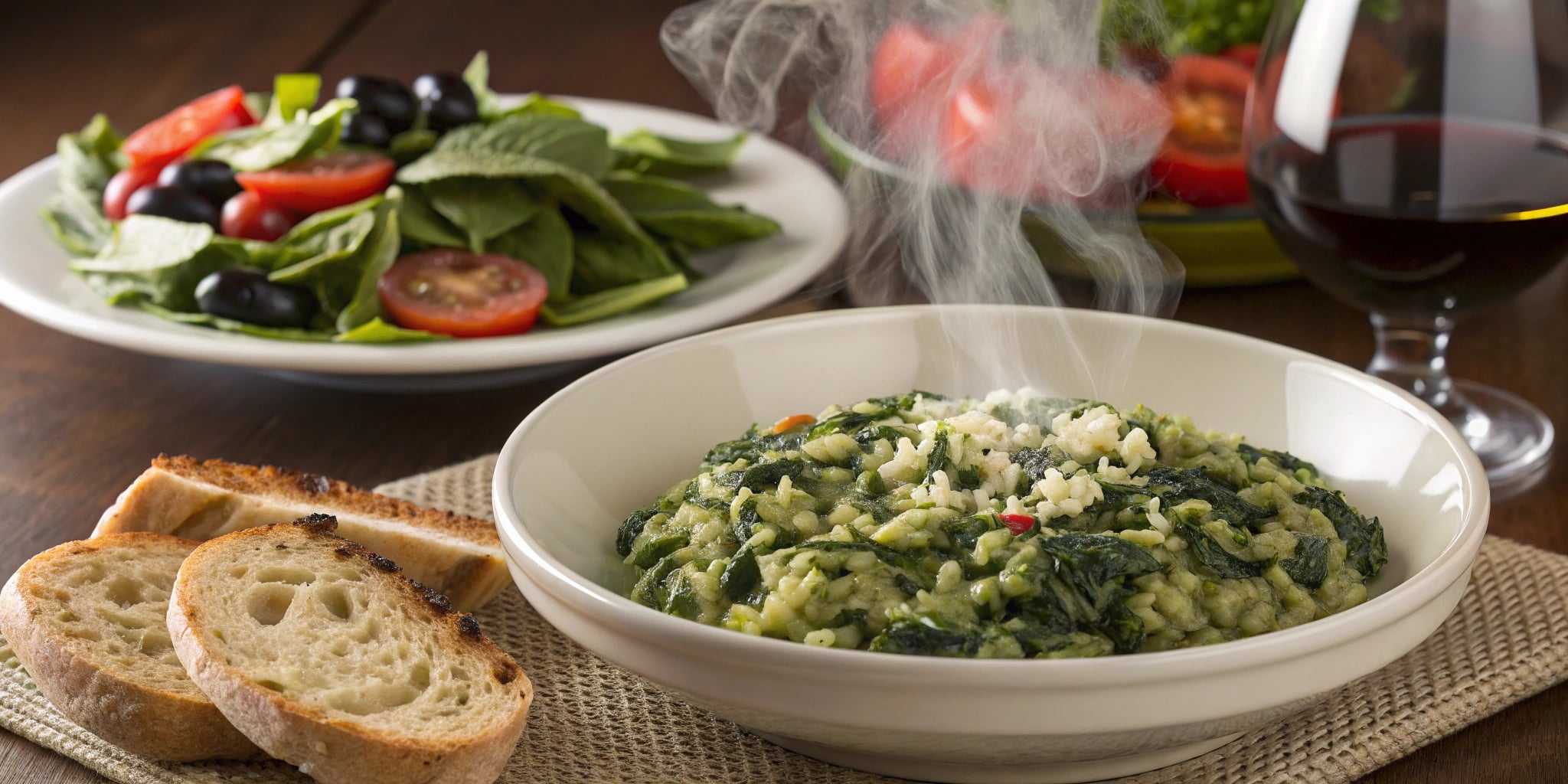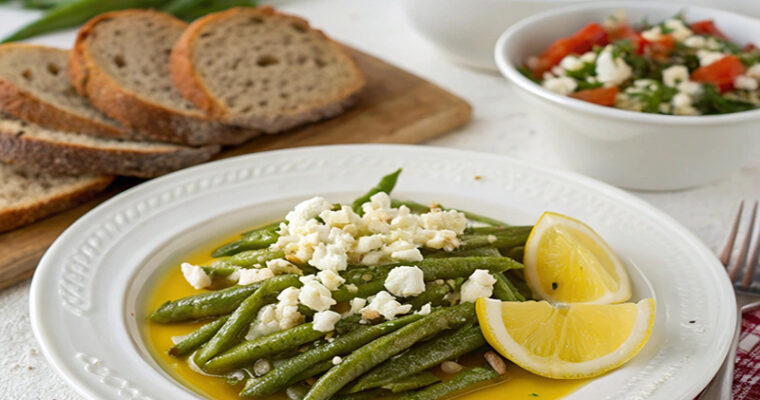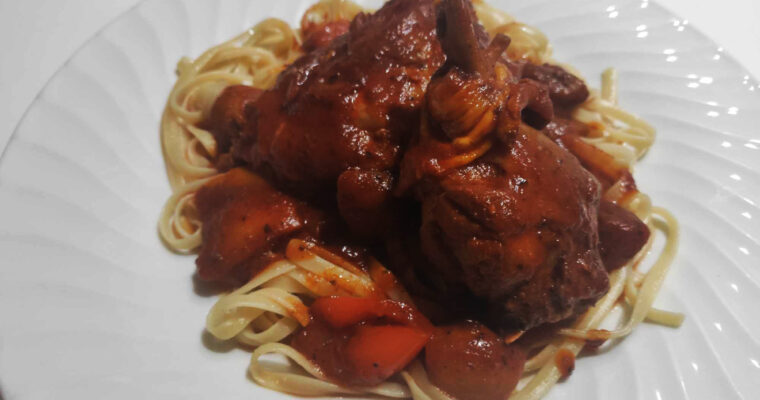Spanakorizo: A Classic Greek Spinach and Rice Dish
If you’re craving something both healthy and satisfying, Spanakorizo Greek Recipe should be your next dish. This beloved Greek recipe brings together fresh spinach, fragrant herbs, and tender rice in a comforting, balanced meal. Greek households have cooked it for generations. It delivers nourishment and flavor in every bite.
In this post, we’ll explore the rich history and origins of Spanakorizo Greek Recipe, along with essential tips and tasty variations. You’ll also learn how to master this dish with confidence in your own kitchen.
The History of Spanakorizo
Spanakorizo traces its roots to traditional Greek cuisine, where cooks prized simple, wholesome ingredients. Rural villages across Greece prepared the Spanakorizo Greek Recipe during spring and summer when spinach grew in abundance. Families relied on what the garden offered, and Spanakorizo made perfect use of seasonal greens.
Greek cooks didn’t need complicated methods or expensive ingredients to create deeply satisfying meals. With rice, olive oil, spinach, and herbs, they created something greater than the sum of its parts.
Generations of Greeks have embraced Spanakorizo as a plant-based meal. During fasting periods in the Orthodox Christian calendar, Spanakorizo Greek Recipe often took center stage at family tables. Its straightforward ingredients and bold flavor have earned it a permanent place in Greek culinary tradition.
The Origin of Spanakorizo
While no single region claims exclusive ownership of Spanakorizo, most agree that it originated in rural Greece. Farmers and home cooks often made Spanakorizo Greek Recipe during the harvest season, especially when gardens overflowed with fresh spinach and herbs.
As the dish spread through the Mediterranean, each region added subtle twists. Despite these differences, Spanakorizo remains a timeless comfort food. Today, you’ll find it everywhere—from family kitchens to seaside tavernas—served as a hearty main or a flavorful side.
Key Facts About Spanakorizo
- Health Benefits: Spinach offers iron, fiber, and vitamins A, C, and K. Paired with rice, the dish becomes a complete vegetarian meal rich in nutrients.
- Minimal Ingredients: Spanakorizo includes just a few fresh staples: spinach, rice, onions, olive oil, dill, and lemon.
- Versatile and Flexible: You can enjoy it warm or at room temperature, as a main dish or alongside grilled meat or fish.
Cooking Tips for the Perfect Spanakorizo
✅ Use Fresh Spinach
Fresh spinach brings vibrant flavor and color. Wash and chop it thoroughly to ensure it cooks evenly with the rice.
✅ Control the Texture
Keep the rice moist but never soupy. If too much liquid remains after cooking, let it simmer uncovered for a few minutes.
✅ Season Generously
Add salt, pepper, lemon juice, and extra virgin olive oil to enhance every bite. Lemon balances the richness of the oil, while dill adds brightness.
✅ Let It Rest
After cooking, let the dish sit for 10 minutes before serving. This short resting time allows the flavors to blend beautifully.
Pro Cooking Tips
- Sauté for Depth: Brown the onions and scallions until golden before adding the spinach. This extra step deepens the overall flavor.
- Choose the Right Rice: Arborio rice creates a creamy result, but Carolina or other medium-grain varieties work well too.
- Add Feta at the End: A few crumbles of Greek feta on top bring salty contrast and creamy texture. Stir in a spoonful of Greek yogurt for added richness.
Variations of Spanakorizo
- Tomato-Style (Red Spanakorizo): Stir in tomato paste or chopped tomatoes for a richer, tangy flavor.
- With Fresh Herbs: Add chopped mint or parsley for a fresh herbal twist.
- Leek Spanakorizo: Include leeks with your onions to add subtle sweetness and aroma.
A Taste of Greek Tradition
Spanakorizo represents more than a simple recipe. It carries stories of village kitchens, seasonal harvests, and family gatherings. Whether you’re preparing it as a light lunch, a side dish, or a comfort meal, Spanakorizo brings the essence of Greek cooking to your table—simple, nourishing, and full of life.
Frequently Asked Questions (FAQ)
1. Can I use frozen spinach for Spanakorizo?
Yes. Frozen spinach works in a pinch, but fresh spinach provides better flavor and texture. Thaw and drain frozen spinach thoroughly before using.
2. How should I store leftovers?
Keep leftovers in an airtight container in the refrigerator for up to 3 days. Reheat gently on the stove with a splash of water or broth.
3. Can I make Spanakorizo ahead of time?
Absolutely. The flavors deepen after a day. Reheat slowly and add a drizzle of olive oil before serving.
Call to Action (CTA)
Have you made Spanakorizo Greek Recipe at home? I’d love to hear how it turned out! Share your photos or tips in the comments below. For more traditional Greek recipes, subscribe to the blog and bring the heart of Greece into your kitchen with every dish.
Personal Closure
Spanakorizo holds a special place in my kitchen and my memories. It’s a dish that reminds me of spring afternoons, family meals, and the beauty of cooking with intention. I hope you enjoy Spanakorizo Greek Recipe as much as I do—and that it brings a taste of Greece to your table, wherever you are.

Traditional Greek Spanakorizo (Spinach and Rice)
Ingredients
- 2 tbsp extra virgin olive oil
- 1 medium onion finely chopped
- 4 scallions thinly sliced (white and light green parts)
- 500 g 1 lb fresh spinach, washed and chopped
- 3/4 cup medium-grain rice Carolina or Arborio
- 2 tbsp fresh dill chopped (or 1 tsp dried)
- 2 tbsp parsley chopped (optional)
- 1 tsp salt or to taste
- 1/2 tsp ground black pepper
- Juice of 1 lemon
- 4 cups hot water or vegetable broth
- Extra virgin olive oil for drizzling
- Optional: 100g crumbled feta cheese for serving
Instructions
Sauté the Onion
- Heat the olive oil in a large pot over medium heat. Add the chopped onion and sauté for 3–4 minutes, until soft and translucent.
Add Scallions
- Stir in the scallions and cook for 2 more minutes, until soft and fragrant.
Toast the Rice
- Stir in the rice and cook for 1–2 minutes, stirring frequently, until the grains are lightly toasted and coated in oil.
Deglaze with Broth
- Add a ladle or two of the hot water or broth to the pot. Stir until the liquid is absorbed, just like making risotto.
Add Spinach & Simmer
- Gradually add the chopped spinach in batches, stirring as it wilts. Once all the spinach is in, pour in the remaining broth or water.
Season & Cook
- Stir in the dill, parsley (if using), salt, and pepper. Bring to a gentle boil, then reduce heat to low. Cover and simmer for 20–25 minutes, stirring occasionally, until the rice is tender and most of the liquid is absorbed.
Add Lemon & Rest
- Remove from heat. Stir in the lemon juice (and zest if using), then cover and let rest for 10 minutes.
Serve
- Drizzle with extra virgin olive oil and top with crumbled feta cheese, if desired. Serve warm or at room temperature.
Notes
- Sweet trahana adds body and a subtle fermented flavor. Substitute with bulgur or semolina if unavailable.
- This pie freezes well before or after baking. Reheat from frozen at 180°C (350°F) until heated through.
- For best results when baking: Preheat a lava stone or baking steel in the oven while it heats up. Place the baking pan directly on the hot stone for an extra crisp bottom crust. This mimics traditional wood-fired hearth baking.
- If using store-bought phyllo, opt for thick, rustic Greek-style sheets (not tissue-thin versions). These hold up better and provide a heartier texture similar to homemade dough.





